A flexible, wearable sensor that analyses biomarkers in sweat has been developed by a collaboration between L’Oréal and researchers from universities in China, South Korea and the US.
Monitoring the chemical composition of sweat can provide useful insights for a variety of applications – from diagnosing disease to enhancing athletic performance. Now, a new wearable device provides detailed information on the composition of sweat, including lactate, chloride and glucose concentrations, pH, and the body’s rate of water loss.
The team that developed the sensor was led by John Rogers of the University of Illinois, US, creator of several innovative technologies including hydration-monitoring tattoos and wearable thermometers.
The disc-shaped device, which is slightly wider than a 10p coin and about half as thick, can adhere to a user’s skin. It uses microfluidics to separate sweat into four chambers, each containing a different colour-changing indicator that responds to a particular analyte. The sweat patches can communicate wirelessly with external devices such as smartphones, enabling biomarker concentrations to be determined using image capture software and colorimetric analysis.
The team even tested the devices on participants in a 104km bike race. They placed patches on the arms and backs of 12 riders, finding that the sensors performed well despite changes in temperature and humidity. None of the participants in the trial reported any discomfort wearing the sensor, or any cases of ‘patch detachment’.
References
A Koh et al, Sci. Transl. Med., 2016, DOI: 10.1126/scitranslmed.aaf2593

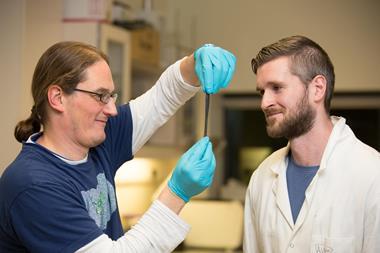








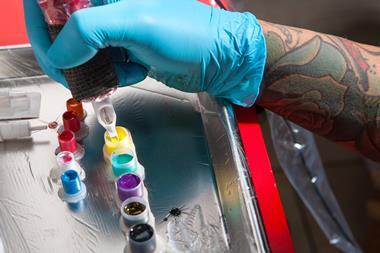

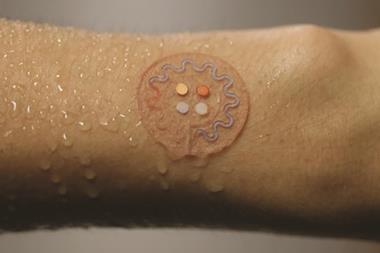
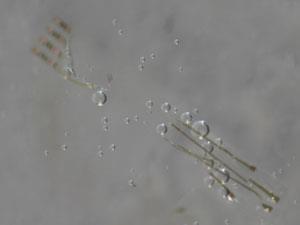
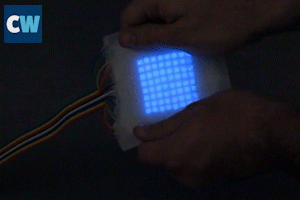











No comments yet